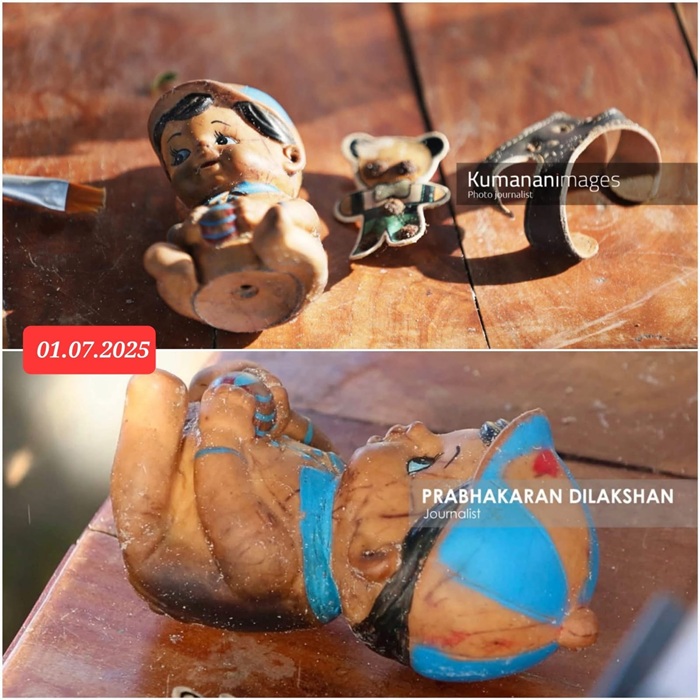
The Chemmani mass graves, recently unearthed in Jaffna, have yielded human remains believed to be that of a child, alongside items including a blue bag inscribed with English letters, a small doll, toys, and a shoe.
Attorney Ranitha Gnanarajah, representing the victims’ families in the Chemmani mass grave case, said archaeologists have identified 33 skeletal remains from the mass graves as of the fifth day of excavations.
She further said that among them, 24 full skeletal remains were unearthed, and four were found intertwined, after which steps were taken to preserve them.
Attorney Ranitha Gnanarajah also revealed that one of the skulls identified earlier, alongside a bag, was completely recovered after a full day of excavation.
Cleaning work was undertaken on Monday (01 July) at locations flagged by forensic archaeologist Prof. Raj Somadeva as possible burial sites. The cleanup was carried out with assistance from archaeology students at the University of Jaffna and staff from the Nallur Pradeshiya Sabha.
Prof. Somadeva and Jaffna Judicial Medical Officer Dr. Sellaiya Pranavan began the excavation at the Chemmani Sittuppathi cemetery on May 15.
Attorney Gnanarajah also noted that Dr. Clifford Perera, who led the Chemmani exhumations in the 1990s, visited the site and discussed prior findings with officials currently overseeing the excavation.
The Chemmani mass graves first came to light in a court testimony in 1996, where Somaratne Rajapakse, who was sentenced to death for the rape and murder of schoolgirl Krishanthi Kumaraswamy, claimed that 300 to 400 burial sites existed in the Chemmani area.
Of the 15 bodies exhumed in 1999, two were identified as youths who had disappeared in 1996. It is reported that no investigations have been conducted regarding the other 13 remains.
The mass graves were once again brought to the limelight after workers from the Nallur Pradeshiya Sabha discovered fragments of human bones on 20 February while clearing land for a construction project. (Newswire)
